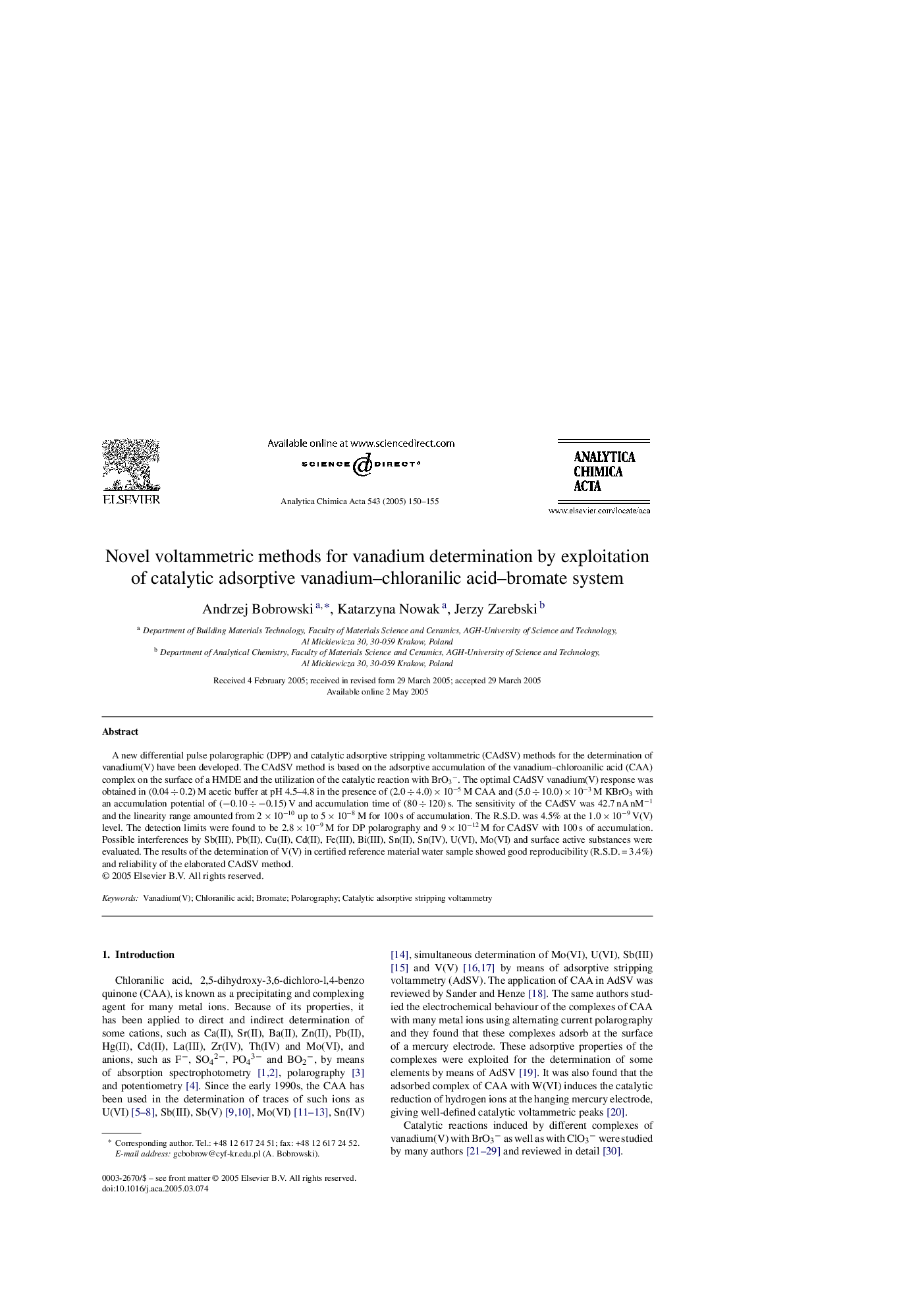| Article ID | Journal | Published Year | Pages | File Type |
|---|---|---|---|---|
| 9743577 | Analytica Chimica Acta | 2005 | 6 Pages |
Abstract
A new differential pulse polarographic (DPP) and catalytic adsorptive stripping voltammetric (CAdSV) methods for the determination of vanadium(V) have been developed. The CAdSV method is based on the adsorptive accumulation of the vanadium-chloroanilic acid (CAA) complex on the surface of a HMDE and the utilization of the catalytic reaction with BrO3â. The optimal CAdSV vanadium(V) response was obtained in (0.04 ÷ 0.2) M acetic buffer at pH 4.5-4.8 in the presence of (2.0 ÷ 4.0) Ã 10â5 M CAA and (5.0 ÷ 10.0) Ã 10â3 M KBrO3 with an accumulation potential of (â0.10 ÷ â0.15) V and accumulation time of (80 ÷ 120) s. The sensitivity of the CAdSV was 42.7 nA nMâ1 and the linearity range amounted from 2 Ã 10â10 up to 5 Ã 10â8 M for 100 s of accumulation. The R.S.D. was 4.5% at the 1.0 Ã 10â9 V(V) level. The detection limits were found to be 2.8 Ã 10â9 M for DP polarography and 9 Ã 10â12 M for CAdSV with 100 s of accumulation. Possible interferences by Sb(III), Pb(II), Cu(II), Cd(II), Fe(III), Bi(III), Sn(II), Sn(IV), U(VI), Mo(VI) and surface active substances were evaluated. The results of the determination of V(V) in certified reference material water sample showed good reproducibility (R.S.D. = 3.4%) and reliability of the elaborated CAdSV method.
Related Topics
Physical Sciences and Engineering
Chemistry
Analytical Chemistry
Authors
Andrzej Bobrowski, Katarzyna Nowak, Jerzy Zarebski,
